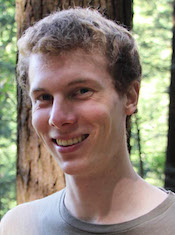- About
- Events
- Calendar
- Graduation Information
- Cornell Learning Machines Seminar
- Student Colloquium
- BOOM
- Fall 2025 Colloquium
- Conway-Walker Lecture Series
- Salton 2025 Lecture Series
- Seminars / Lectures
- Big Red Hacks
- Cornell University / Cornell Tech - High School Programming Workshop and Contest 2025
- Game Design Initiative
- CSMore: The Rising Sophomore Summer Program in Computer Science
- Explore CS Research
- ACSU Research Night
- Cornell Junior Theorists' Workshop 2024
- People
- Courses
- Research
- Undergraduate
- M Eng
- MS
- PhD
- Admissions
- Current Students
- Computer Science Graduate Office Hours
- Advising Guide for Research Students
- Business Card Policy
- Cornell Tech
- Curricular Practical Training
- A & B Exam Scheduling Guidelines
- Fellowship Opportunities
- Field of Computer Science Ph.D. Student Handbook
- Graduate TA Handbook
- Field A Exam Summary Form
- Graduate School Forms
- Instructor / TA Application
- Ph.D. Requirements
- Ph.D. Student Financial Support
- Special Committee Selection
- Travel Funding Opportunities
- Travel Reimbursement Guide
- The Outside Minor Requirement
- Robotics Ph. D. prgram
- Diversity and Inclusion
- Graduation Information
- CS Graduate Minor
- Outreach Opportunities
- Parental Accommodation Policy
- Special Masters
- Student Spotlights
- Contact PhD Office

Rahul Chatterjee
Secure Typo-Tolerant Password Checking
Passwords are the primary mode of user authentication on the web despite the usability issue that they are hard to enter correctly. Users often make mistakes while typing their passwords, and in current practice, login is rejected. In this talk, I will discuss how to build a typo-tolerant password checking system that allows legitimate users to successfully authenticate despite making small mistakes in their passwords. I will show the benefits of tolerating a carefully chosen set of typos and analyze the security implications of doing so.
Passwords are the primary mode of user authentication on the web despite the usability issue that they are hard to enter correctly. Users often make mistakes while typing their passwords, and in current practice, login is rejected. In this talk, I will discuss how to build a typo-tolerant password checking system that allows legitimate users to successfully authenticate despite making small mistakes in their passwords. I will show the benefits of tolerating a carefully chosen set of typos and analyze the security implications of doing so.
Faculty Advisor: T. Ristenpart
------------------------------------------------------------------------------
 Thodoris Lykouris
Thodoris Lykouris
Adaptive decision making in a data-driven society
Online marketplaces have undoubtedly altered our everyday life in many ways. One big similarity across these marketplaces is that they need to make sequential decisions at the face of uncertainty about the future, which opens up a wide range of new challenges. In this talk, I will describe a common theme across most such online marketplaces as well as the challenges they encounter. I will subsequently focus on how to deal with a particular hurdle: data may be corrupted and marketplaces need to employ methods that are robust to such corruptions.
Faculty Advisor: Eva Tardos
----------------------------------------------------------------------------------------------------------------
 Eston Schweickart
Eston Schweickart
Animating Elastic Rods with Sound
In virtual environments, creating realistic animations of objects encompasses not only generating plausible motions and visualizations, but often obtaining synchronized sounds as well. Within the field of computer graphics, modern sound generation methods can sonify a wide range of physics-based animation of solid objects, resolving vibrations and sound radiation from various structures. However, long and thin objects, commonly referred to as elastic rods, are an important computer animation primitive for which prior sound synthesis methods are ill-suited for several reasons: large displacements, nonlinear vibrations, dispersion effects, and the geometrically singular nature of rods.
In this talk, I will describe physically based methods for simultaneous generation of animation and sound for deformable rods. I will introduce an efficient acoustic radiation method based on dipoles, and show how to tie it to existing elastic rod simulation frameworks that are commonly used within computer graphics. I will present several examples of our results, including challenging scenes involving thousands of highly coupled frictional contacts.
Faculty Advisor: Steve Marschner
----------------------------------------------------------------------------------------------------------------


